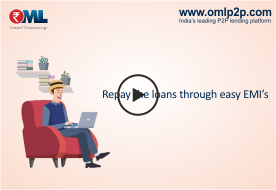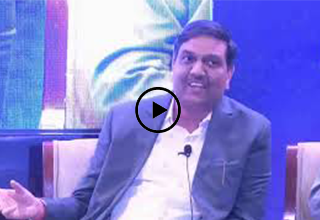What are Equity Shares?
Nov 19,2019 Investing, Investment, Shares

Any business or commercial entity needs 4 kinds of inputs (also called factors of production in economics) viz Land, Labour, Capital, and Entrepreneurship. We herein deal with Capital which is one of the factors of production required to run a business. Capital here means owners equity plus debt borrowed from others.
When a business is small the entrepreneur starts with his own funds and invests in the business. This entrepreneur is also called a promoter of the business. If he finds his own savings are not enough he usually seeks help from family or friends who lend him money to start the business. These borrowings comprise debt for the business. Hence total funds (owner's fund plus debt) invested in business comprises one of the factors of production called Capital. Though strictly as per corporate finance or accounting principles only the owner's fund is classified as capital whereas borrowed funds are classified as debt.
As business starts earning income from sales, a portion of income is used to pay interest to lenders of debt which is a fixed liability (hence debt is also called Fixed Income Instrument). Apart from this, income is used to meet other expenses like rents, cost of raw materials, wages and salaries, selling and general administration expenses, taxes, etc. Post-meeting all these expenses the balance is called Profit After Taxes or PAT which is variable in nature as per business conditions.
This PAT belongs to the owner who invested in the business. The owner is free to use the same for his own consumption or reinvest a portion back into the business.
As the business grows the requirement for funds increases to invest in bigger plants, machines, land, raw materials, etc. At this point in time owner may find it beyond his means to invest further. Hence he would invite like-minded people to join the business and bring in their own funds as a contribution towards business. This form of business entity is called a partnership firm where each partner is a stakeholder in the business and their claim on PAT is determined as per the ratio of their contribution to the business.
Many businesses continue as an individual owned business, some continue as partnerships also. Whereas some businesses evolve and find they can expand their business further but the requirement of funds becomes so huge that it is beyond the capacity of owner/partners to fund. Herein comes the formation of companies with a larger set of owners who bring in funds for investment into the business.
But a larger number of investors though being like owners they cannot run the business like the original promoter of business due to expertise required which is called Entrepreneurship (another factor of production mentioned above). Hence modern corporate finance which has evolved in the last 3 to 4 centuries has allowed such ownership of business without the requirement to run the business as entrepreneurs. Such investors only bring in funds and partake the benefits of profit or loss of business. However in order to ring-fence these investors from other liabilities of business, like statutory liabilities, debt and other consequent liabilities for running the business, an instrument is devised which is called Equity Shares.
Essentially what happens is that original promoters form a business entity called Limited liability company (it can be privately limited or public limited) and invites investors to invest in Equity Capital of this company. By doing so investor in equity capital is liable to lose only the amount invested in the company if the business makes loss but stands to claim share in profit of the business in the ratio of his ownership in total capital. For a simplistic example, if the total equity capital of the company is Rs 10 Lac and Mr. ABC an investor has invested Rs 10000/- which means his share of ownership is 1%. If this business makes a PAT of Rs 1Lac then Mr. ABC's claim is 1% of 1Lac which is equal to Rs 1000. As we all know PAT of business is of variable nature. So the returns from such investments are also variable and not fixed.
This form of ownership of a company through shares is called Equity Shares.
Next we will discuss returns from equity investments (Part 2 to continue)
Written by
Pramod Kumar Akhramka
Founder and Director of www.omlp2p.com









Comments
Post Comment